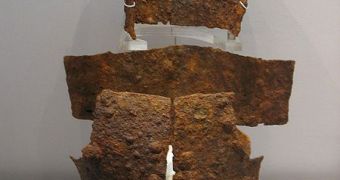On Friday, authorities in Malaysia announced that excavations conducted in the northern part of the country yielded some interesting finds, in that researchers discovered iron smelt dating back to as far as the third or fourth century AD. This has major implications on the way historians viewed the evolution of civilization on these lands, because it means that people living here were more technologically advanced than scholars first estimated. The team conducting the digs even found parts of a furnace, which was most likely used to melt the iron ore.
Center for Archaeological Research Malaysia director Mokhtar Saidin said that the northern Kedah state, where the discovery was made, was in the past home to the Bujang Valley people, an ancient population that lived in what is now Malaysia. Saidin, who is also the archaeologist in charge of the excavations, added that some pieces of a furnace and remnants of what appears to be a storage area of some kind were found at the Kedah site, and that these artifacts held great value to the history of the country.
After discovering the pieces, Saidin had them shipped to a Florida testing facility, where carbon testing revealed that the samples were at least 1,700 years old, give or take 40. “This result (...) really shows that the Bujang Valley people during that time were very high-tech,” he said after the announcement. The scientist added that the team also recovered numerous beads of iron, copper bracelets, as well as some amounts of pottery. In addition, an air nozzle, most likely used to keep the fire going at high enough temperatures, was also found near the ruins of the furnace.
In fact, he admitted, researchers at this point have no idea if the Bujang Valley people were organized in a civilization, in all the meanings the word implies. “It's too early to say it is a civilization,” said National Research Center of Archaeology researcher Harry Truman Simanjuntak, from Jakarta. But Saidin argues that the existence of Buddhist and Hindu temples, which were unearthed at other similar locations, proves beyond a doubt the idea of social hierarchy.

 14 DAY TRIAL //
14 DAY TRIAL //